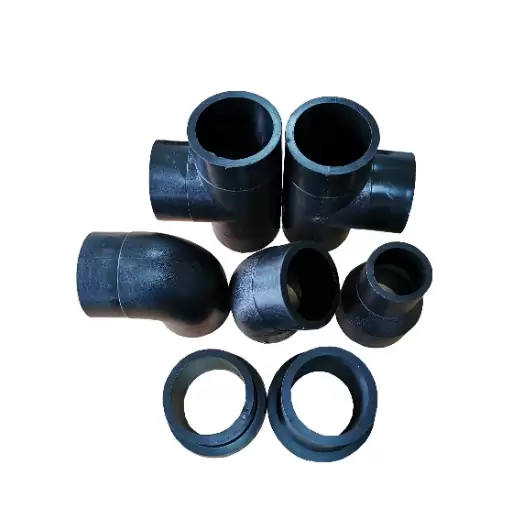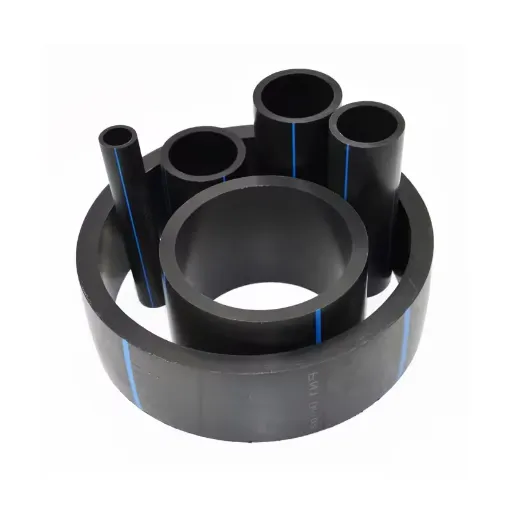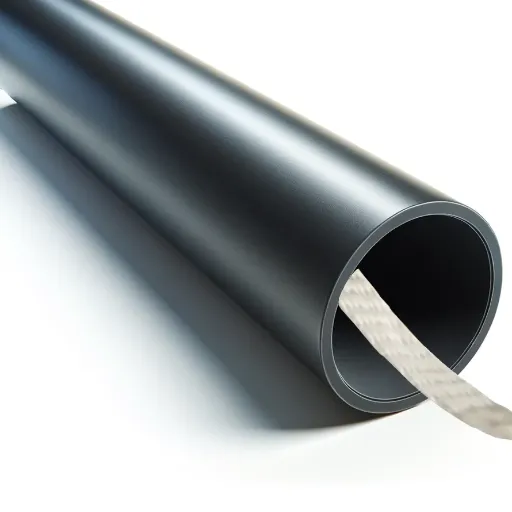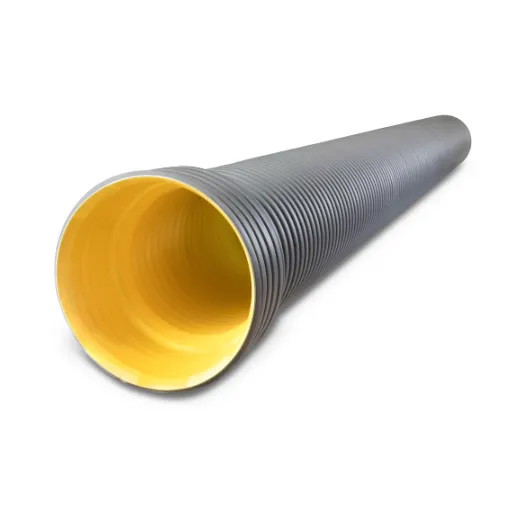High-density polyethylene (HDPE) pipe fusion represents a crucial process in modern infrastructure development, offering unparalleled reliability and durability in water, gas, and industrial pipeline systems. This guide seeks to provide professionals with an in-depth understanding of heat fusion techniques, emphasizing the science, best practices, and precision required to achieve strong, leak-free joints. By exploring various fusion methods, such as butt fusion, socket fusion, and electrofusion, this article equips readers with the technical knowledge to meet industry standards and optimize performance in real-world applications. Whether you’re a beginner seeking foundational insights or an experienced technician looking to refine your expertise, this comprehensive guide will serve as an authoritative resource for mastering HDPE pipe fusion.
What is HDPE Pipe Fusion?
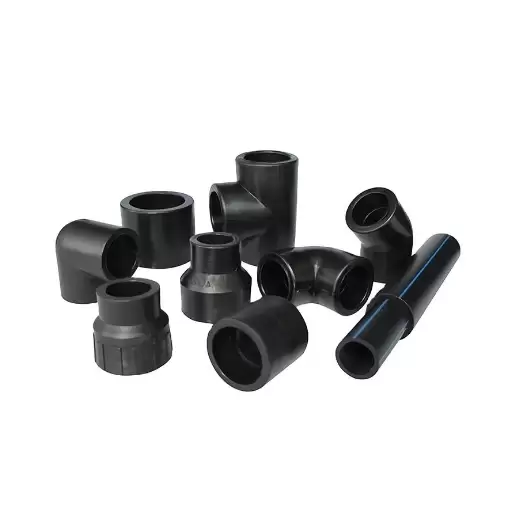
Understanding the Fusion Process
As with any two thermoplastic pipes, joining them simultaneously results in a continuous, leakproof system which is achieved using HDPE pipe fusion. The pipe fusion process requires the end of the pipes to be heated to a specific temperature and pressed together to form one entity after cooling down.
- Fusion Temperature: HDPE fusion temperature should ideally be maintained between 400F to 450F (204C to 232C). This is to make certain the material is in its molten state while retaining its shape and structure.
- Alignment and Pressure: Industry standards such as ASTM F2620 lay down proper fusion pressures and alignments of 60 PSI to 90 PSI based on the size and grade of the material. Misalignment of the pipes may cause unwanted offsets, making proper alignment essential.
- Cooling Time: Pipes are cooled on a controlled flow which depends on wall thickness and pipe diameter so that the solid joint provides no weaknesses.
Following rules set by industries and manufacturers is essential with regard to guidelines set because the accuracy of technical requirements affects joint strength and long-term performance along with its accuracy.
Benefits of Using HDPE Pipes
When it comes to the mining industry, sewage disposal, and even the gas or water supply, HDPE (High-Density Polyethylene) pipes have become the centerpiece due to their usability and versatility.
- Durability and Longevity: As compared to traditional pipes, HDPE pipes are less prone to corrosion, chemical wear, as well as environmental stress cracking so they can withstand being placed underground, or in harsh environmental conditions. With proper usage these pipes can last more than fifty years.
- Flexibility and Strength: HPDE pipes are capable of bending without any sort of breaking, withstanding both ground movements, and extreme temperatures ranging from -40 degrees Fahrenheit or -40 degrees Celsius to 140 degrees Fahrenheit or 60 degrees Celsius. Their flexibility alongside maintained tensile strength guarantees reliable performance under pressure and ensures dependable performance over time.
- Fusion Integrity: For HDPE pipes, heat fusion technology is used to create strong, leak-proof joints which significantly reduces the likelihood of contamination or leakage in systems such as water piped for drinking. Following the joining guidelines does assure consistent with fusion temperatures of 400 degrees Fahrenheit or 204 degrees Celsius to 450 degrees Fahrenheit or 232 degrees Celsius.
- Reduced Friction and Increased Flow Efficiency: Due to the internal surface geometry, there is a low friction drag, resulting in lower pressure losses while improving flow rate. As a result, High Density Polyethylene is ideal for situations requiring preservation of fluid velocity.
- Low Weight and Reduced Installation Costs: Compared with traditional steel or concrete pipes, HDPE pipes are much lighter. This leads to lower transportation and handling expenditures and also allows for faster and easier installation in remote or difficult-to-access areas.
With the adoption of industry technical specifications and taking into account those options, HDPE pipes become the most effective and reliable solution for the economical infrastructure and industrial projects.
Common Applications of Polyethylene Pipe
The versatility, durability, and cost-efficiency of polyethylene pipes make them the preferred choice for many industries. Their most used applications include the following:
- Water Distribution Systems: Polyethylene pipes are commonly used with potable water due to their superior corrosion resistant qualities and long service life.
- Gas Distribution: Given their exceptional strength-to-density ratio and ability to resist high internal pressures, HDPE pipes are utilized in gas distribution systems. Depending on the pipe dimension ratios (SDR), typical working pressure ratings range from 100 psi to 200 psi.
- Irrigation and Agricultural Applications: HDPE and LDPE pipes are ideal choices for delivery lines on farms because they are flexible and UV resistant, making them perfect for long-term outdoor use regardless of the environment.
- Sewage and Drainage Systems: HDPE pipes have smooth interior surfaces with no scaling or sedimentation which makes them optimal for non-pressurized drainage and sewer applications.
- Industrial Uses: Polyethylene pipes are used in certain industries for the transportation of chemicals, slurries, or other abrasive substances. Their chemical resistance means they suffer no effects from acidic or alkaline materials even during prolonged usage.
- Telecommunications and Power: Optic fiber power lines are well protected by HDPE pipes, which serve as conduits due to their high impact resistance and insulation from electric current.
As an example, the diameter of the pipes range from half an inch to sixty-three inches which have SDR values specifically crafted for pressure and flow needs. The precise requirements of these applications justify these parameters. Because of pressure, flow, and other distinctive features, polyethylene pipes provide unparalleled flexibility and dependability.
How Does the Fusion Process Work?
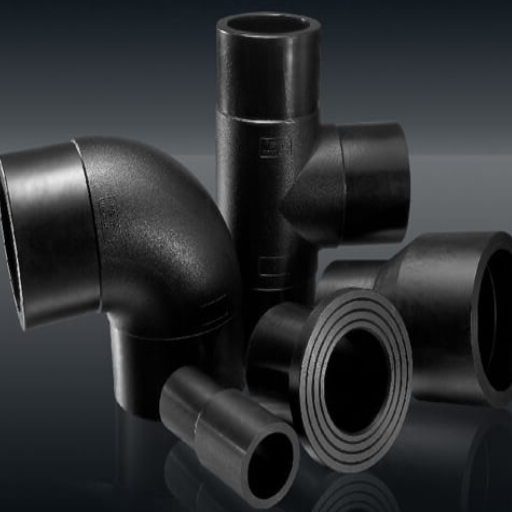
Exploring Socket Fusion Techniques
Socket fusion is a process that welds polyethylene pipes and accessories by applying heat and pressure. Specifically, the method makes use of a hemispherical heating tool that heats the outer side of the pipe and the inner part of the fitting in a circular manner. After sufficient heating, the surfaces are joined by a combination of axial alignment and application of pressure which results in a homogenous joint formation. This technique makes sure no leaks occur and the pipe remains solid under assorted conditions.
- Heating Temperature: The socket fusion process can be performed at 490F or 254C for the heating element to melt the polyethylene surface but not decompose it.
- Heating Time: Heats cycles between 5 and 50 seconds guarantee proper thermal penetration for pipes of different diameters.
- Fusion Pressure: During the joining phase, constant pressure is implemented to mitigate the risks of voids of over-compressed welds.
- Cooling Time: The pipe is left in place and allowed to cool undisturbed for some time between 2 and 20 minutes to let The ambient temperature solidify the weld.
Correctly calculating these factors guarantees that irrespective of pipe size and material grade, the joint will outlast any stress or pressure limits expected from it. Following these specifications guarantees that socket fusion will work with polyethylene pipelines.
The Role of Fusion Equipment in Ensuring Quality
The integral function of fusion equipment is to ensure the integrity and functionality of polyethylene pipeline systems. Equipment that is well calibrated and serviced guarantees heat is consistently applied and pressure is evenly dispersed throughout the fusion process; both of which are necessary for forming strong joints.
- Heating Plate Temperature: Usually held between 400°F and 450°F (204°C – 232°C), subject to material specification so that the polyethylene is melted without damage being caused.
- Alignment Precision: Both the pipe and the fitting have to be positioned within ±1° tolerance because failure to conform to this will cause inconsistencies in joint strength and integrity.
- Fusion Pressure: The specified pressure must range between 60 to 90 psi as per the material standard for ensuring complete bonding without causing undue deformation.
If these factors are respected and the equipment is checked and confirmed to be in good working order on a regular basis, the possibility of joint defects are reduced and therefore reliability together with long-term performance of the pipeline is enhanced.
What Fusion Equipment is Necessary?
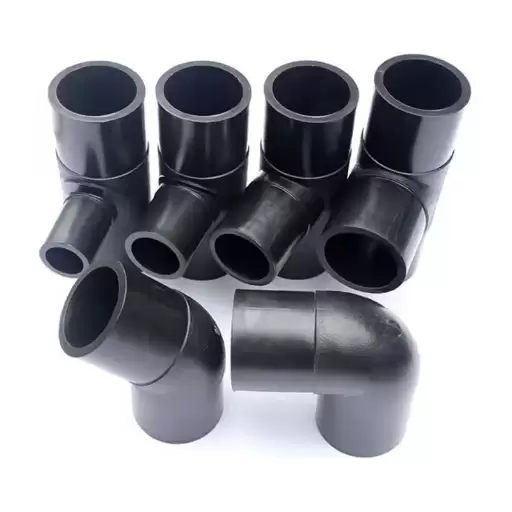
Choosing the Right Equipment for Your Project
The construction and engineering industries heavily depend on fuse equipment for accurate fusion jointing of pipes. My first step is to determine the pipe material and pipe fusion class. Every fusion machines has its specialty; some are designed for small pipe fittings while others, like the elbow fusion machine for a particular branch of plumbing, use pipes with diameters smaller than 24 inches.
I then evaluate the operational pressure and temperature reasonable for the material standard. For example, high-density polyethylene (HDPE) is known to have a fusion temperature of anywhere between 400°F and 450°F (204°C to 232°C).
This quality drives my decision as much as the level of automation and portability. In some cases, having light and portable equipment is ideal, while fully automated machines make more sense for larger fusion projects where the angle and speed of rotation need to be accurately met. Knowing that the equipment can actively monitor controls, and temperature, and check calibration makes it easier to comply with the preset standards.
At last, I check the manufacture’s certification and if any maintenance support is offered lowering the chances of failure while in critical operations. The consider sure the selected fusion equipment meets the project requirements and is complete with specifications.
Maintaining Fusion Equipment for Longevity
To keep fusion equipment working for a long time, one must use a specific strategy to maximize performance and dependability. Initially, I check the machinery for any damages or deterioration, most notably in heating elements, pressure seals, and rotation parts. Monitoring these components allows me to solve problems before they magnify. For instance, following the conditions of use prescribed by the manufacturer, such as staying within ±2 °C of the specified temperature windows and not going over certain RPMs, assists in safeguarding machinery as well.
Monitoring machine and instrument set-up is another task I need to perform because imprecise measurement equipment like thickness or alignment tools with standards of ±0.01 mm can lead to wrong operations, leading to malfunction. In addition, cleaning leftover materials that may cause the fusion equipment to not work at an optimum level requires lots of attention. I also have a strict policy of corrosion prevention which means only using cleaning products approved by the manufacturer.
I follow the maintenance protocol stated in the specifications manual, which usually requires lubrication of moving parts at certain times and changing consumable parts, such as filters or seals, as defined (e.g., after every 500 hours of operation). Hence, I make sure that any automated systems are updated on software changes to fix issues or enhance features promptly. Keeping track of these detailed maintenance procedures enables me to increase the outlastingness and dependability of the fusion machines.
How to Ensure Leak-Free HDPE Pipe Systems?
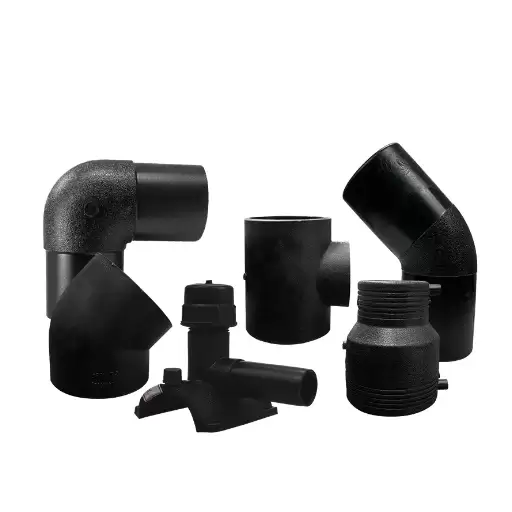
Importance of Proper Fusion Pressure
Fusion pressure is critical to achieving leak-free HDPE pipe systems. Joint integrity is largely dependent on the fusion pressure level; either too little or too much pressure will likely result in joint failure due to improper bonding. The right amount of pressure results in the molten polyethylene material flowing into the spaces between the pipe ends, thus forming a bond that is as strong as the pipe.
- Fusion Pressure Range: Typically between 60 to 90 psi based on the pipe’s diameter alongside the regulations set by the manufacturer for binding the pipes.
- Alignment Tolerance: Misalignment tolerance is equal to ten percent of the pipe wall thickness. The joint should not sustain excessive forces due to misalignment.
- Heating Time: For pipe diameter, the heating plate must remain for 200 to 220 seconds at 400 to 450 degrees Fahrenheit. This results in proper material softening before the application of pressure.
- Cooling Period: To facilitate adequate joint cooling and solidification for constructural integrity, at least five minutes under pressure is advised.
Adhering to these guidelines will likely help avoid excessive leaks as well as guaranteed performance. Reliable joints can be achieved through regular quality checks as well as ensuring a clean fusion surface.
Standard Practices for Heat Fusion
To guarantee that the heat fusion process is of the utmost quality, the practices below are additionally suggested:
- Preparation of Pipe Surface: It is necessary to remove all contaminants from the surfaces that need to be fused like grease, moisture, and dirt with the aid of approved cleaning solvents; otherwise, the integrity of the joint will be at risk.
- Fusion Interface Pressure: The pressure during the fusion interface should be kept within a nominal range of 60 to 90psi. It is recommended that the pressure is adjusted according to the specifications of the pipe and the type of material that it is made of. This aids in ensuring that there is uniform flow and bonding of materials around the joint.
- Inspection Before Fusion: Check the heating plate’s temperature distribution with an infrared thermometer and ensure that the plate surface is around the 400 F to 450 F mark while in operation. This is necessary as it ensures the plate’s surface temperature is constantly within range for softening purposes.
- Fusion Equipment Maintenance: Ensure that the fusion equipment is calibrated periodically to aid in preventing malfunction. Also, check for any misalignment of the tools, broken pressure plates, and non-working gauges to enable proper functioning.
Such practices strengthen the dependability of the heat fusion process, improve the integrity of the joints, and reduce the chances of long-term failures.
Common Mistakes and How to Avoid Them
- Inadequate Soaking Time: If the material is not heated long enough for it to adequately soften, bonding will be poor. To prevent this, make sure that the heating plate is set at a temperature of 400°F to 450°F and keep it at that temperature for the specific duration specified for the particular material.
- Unequal Distribution of Pressure: Weak joints or misaligned joints may occur as a result of inconsistent pressure application during fusion.
- Dirty Surfaces: Moisture, dust and other debris on the surface can impair the quality of the joint. You should always scrub the ends of the pipes as well as the heating plate with approved cleaners before commencing the fusion process.
- Excessive Heating of the Material: Heating above the recommended level for the material may considerably lower its quality. Regularly check the heating equipment with an infrared thermometer to make sure that the temperature is within required limits.
- Ignoring Equipment Checks: Predictable results are not possible when using incompletely calibrated or aged tool so systematic maintenance check is important. Heating plates and gauges require recalibration and maintenance so they can be reset to the operating specifications.
The reliability of a fusion joint can be improved and the probability of a failure reduced by rectifying the common errors and following the baseline criteria.
What are the Advantages of Fabrication Facilities?
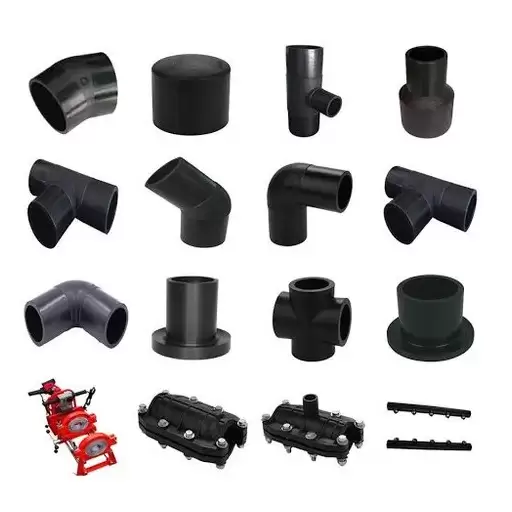
Capabilities of Modern Fabrication Facilities
Advanced fabrication facilities aim for effectiveness, customization, and accuracy for diverse industries. High accuracy requirements are achieved through advanced automation technologies like CNC (computer numerical control) machines, lasers, and welding robots. Their functions include comprehensive assembly and complex systems met in record time with high production quantities while meeting necessary quality and tolerance levels.
- Precision tolerances: For aerospace or medical devices, – 0.001-inch tolerances are essential for high-accuracy parts.
- Material range: Having the ability to process a wide range of materials such as composites, aluminum, stainless steel, and engineered elves aids the entire sector’s functionality.
- Load capabilities: Construction strength is needed to ensure a structure meets certain load tolerances when handling different densities and thicknesses of materials.
- Thermal control measures: During welding and heat treatment, temperature control is maintained at +/- 5 degrees from a set point to keep materials from warping or breaking down.
- Quality control guidelines: Implementation of ISO 9001-managed quality systems guarantee process visibility and product dependability, thus ensuring validity after implementation.
Utilizing these features with strict adherence to defined technical requirements allows modern facilities to enhance product quality and production scalability while decreasing lead times and operational expenditures.
Enhancing Efficiency with Pipe Fabrication
To improve productivity in pipe dampers technical specifications have to be defined:
- Choice of Materials: The selection of proper materials like carbon steel, stainless steel, and alloy steel enhances the support structures’ mechanical strength, corrosive environment resistance, and thermal stability, which is dependent upon the operating environment.
- Accurate Cutting and Joining: Computer Numerically Controlled (CNC) machines enhance the accuracy of cutting and beveling pipes to high tolerances (±0.5 mm). Gas Tungsten Arc Welding (GTAW) and Submerged Arc Welding (SAW) are more advanced welding techniques that can fitly join the parts together, thereby reducing the chances of welding defects.
- Use of Automation and Robotics: With the aid of automated handling systems together with robotic welders, the degree of human error is reduced, as well as the time needed to fabricate gets lower, thus raising fabrication efficiency. Furthermore, the items can be manufactured non-stop, thus raising productivity.
- Non-destructive Examination (NDT): Use of ultrasonics (UT), radiography (RT), or dye penetrant (PT) testing does not destroy fabricated components; therefore, submitted weld defects lose their significance.
- Dimensional and Geometric Tolerances: When the components’ dimensions are in the prescribed and defined limits (in this case ±0.1%), the amount of problems related with the fitting of the parts during assembly drastically reduces are the fitting of the parts is seamless and relatively easy to install.
- Thermal Stress Management: Weld Preheat and Post Weld Heat Treatment (PWHT) minimizes the thermal stress the materials that experience severe temperature differentials have to deal with.
Using these methods while adhering with the technical requirements allows the fabrication facilities to enhance their operational efficiency, while, at the same time, ensure that reliable product quality is delivered while complying with industry standards and operational needs.
Reference sources
Frequently Asked Questions (FAQs)
Q: What is HDPE pipe fusion and how is it used?
A: HDPE pipe fusion, also known as heat fusion joining, is a process used to join two pieces of thermoplastic pipe together. This method is commonly associated with high-density polyethylene pipe and involves heating the pipe ends and then pressing them together to form a permanent bond.
Q: What are the different techniques used in HDPE pipe fusion?
A: The main techniques include butt fusion, saddle fusion, and electrofusion. Each method involves different procedures and equipment but all aim to fuse pieces of thermoplastic pipe effectively.
Q: Is fusion training necessary for operating HDPE fusion equipment?
A: Yes, proper fusion training is essential for ensuring safety and achieving reliable results. Many manufacturers and service providers offer pipe fusion training to help operators become proficient in using HDPE pipe fusion equipment.
Q: Can HDPE pipe fusion be performed on-site?
A: Absolutely, HDPE pipe fusion can be performed on-site, which is often advantageous for large-scale installations or when dealing with long straight lengths or coils of pipe. On-site fusion services help minimize transportation costs and logistical challenges.
Q: What are the common fittings used in HDPE pipe fusion?
A: Common fittings include tees, adapters, and fabricated fittings. These are used to connect different sections of pipe and provide flexibility in system design.
Q: How does HDPE pipe fusion compare to other joining methods?
A: Unlike mechanical joining methods, HDPE pipe fusion creates a leak-proof, permanent bond that is often stronger than the pipe itself. This is ideal for high-pressure applications and environments where reliability is critical.
Q: What should I consider when planning a pipe fusion project?
A: Consider the pipe support, job site conditions, and the specific fusion joining technique that will be used. Additionally, ensure that all operators are trained and that the necessary equipment is available on-site.



